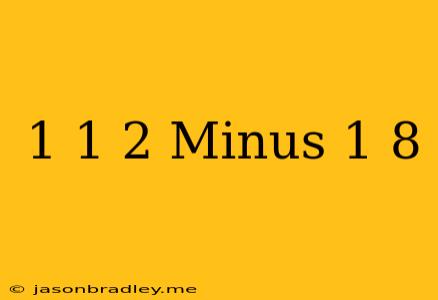Subtracting Fractions: 1 1/2 - 1/8
This article will guide you through the process of subtracting the fractions 1 1/2 and 1/8.
Understanding Mixed Numbers
First, we need to understand what a mixed number is. A mixed number, like 1 1/2, represents a whole number and a fraction combined. In this case, it means one whole and one half.
Converting to a Single Fraction
Before we can subtract, we need to convert the mixed number (1 1/2) into a single fraction. To do this, follow these steps:
- Multiply the whole number by the denominator: 1 x 2 = 2
- Add the numerator: 2 + 1 = 3
- Keep the same denominator: 3/2
Now our problem is: 3/2 - 1/8
Finding a Common Denominator
Before we can subtract fractions, they must have the same denominator. The least common denominator of 2 and 8 is 8.
- Multiply the numerator and denominator of 3/2 by 4: (3 x 4) / (2 x 4) = 12/8
- The fraction 1/8 remains the same.
Our problem now looks like this: 12/8 - 1/8
Subtracting the Fractions
Now that the fractions have the same denominator, we can subtract the numerators:
12/8 - 1/8 = 11/8
Simplifying the Answer
Our answer, 11/8, is an improper fraction (the numerator is larger than the denominator). We can convert it back to a mixed number:
- Divide the numerator by the denominator: 11 ÷ 8 = 1 with a remainder of 3
- The quotient (1) becomes the whole number.
- The remainder (3) becomes the numerator.
- The denominator stays the same.
Therefore, 11/8 is equivalent to 1 3/8.
Final Answer
1 1/2 - 1/8 = 1 3/8
